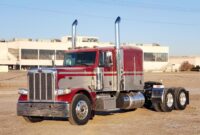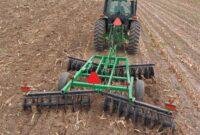Boom Trucks For Sale Near Me: Your Comprehensive Guide to Finding the Right Lifting Solution sale.truckstrend.com
In the dynamic world of construction, utilities, tree services, signage installation, and countless other industries, the ability to safely and efficiently lift and position heavy materials or personnel at height is paramount. This is where the boom truck becomes an indispensable asset. Often referred to as a truck-mounted crane or a picker truck, a boom truck combines the mobility of a heavy-duty truck chassis with the power and reach of a hydraulic boom, making it a versatile workhorse for a wide array of elevated tasks.
The quest for "Boom Trucks For Sale Near Me" is more than just a search for equipment; it’s a strategic decision to enhance operational efficiency, ensure worker safety, and potentially unlock new project opportunities. Finding a boom truck locally offers numerous advantages, from reducing transportation costs and inspection logistics to providing easier access to local service and parts support. This comprehensive guide will navigate you through the process of understanding, finding, evaluating, and ultimately acquiring the ideal boom truck to meet your specific operational needs.
Boom Trucks For Sale Near Me: Your Comprehensive Guide to Finding the Right Lifting Solution
Understanding Boom Trucks: More Than Just a Crane on Wheels
At its core, a boom truck is a specialized vehicle designed for lifting, lowering, and moving materials or personnel to elevated positions. It typically consists of a robust truck chassis (the base vehicle) integrated with a powerful hydraulic boom mechanism.
Key Components:
- Chassis: The foundation, providing mobility and stability. Can be two-wheel, four-wheel, or even all-wheel drive.
- Boom: The extendable arm, usually telescopic (straight sections that extend) or articulating/knuckle (jointed sections that fold).
- Outriggers/Stabilizers: Hydraulic legs that extend from the truck frame to provide stability and prevent tipping during operation.
- Control System: Allows the operator to maneuver the boom, often including a remote control for precise positioning.
- Winch/Hoist: For lifting materials, typically with a hook.
- Personnel Basket (optional): A platform for safely elevating workers.

Common Applications:
- Construction: Lifting trusses, steel beams, pre-fabricated walls, concrete forms.
- Utilities: Installing and maintaining power lines, telecommunication equipment, streetlights.
- Tree Service: Trimming branches, removing trees, clearing storm debris.
- Signage & Lighting: Installing large signs, billboards, and high-mounted lights.
- HVAC & Roofing: Lifting units onto rooftops.
- General Maintenance: Accessing elevated areas for building repairs or cleaning.


Types of Boom Trucks:
- Telescopic Boom Trucks: Feature a straight, extendable boom, ideal for direct vertical lifts and reaching distant points.
- Knuckle Boom Trucks (Articulating): Have a jointed boom that can fold and articulate, offering greater maneuverability in confined spaces or around obstacles.
- Digger Derricks: Specialized utility trucks equipped with an auger for digging holes and a boom for setting poles.
- Material Handling Boom Trucks: Designed primarily for lifting and placing materials, often without a personnel basket.
The Strategic Advantage: Why Invest in a Boom Truck?
Owning a boom truck provides significant operational and financial benefits for businesses and contractors:
- Versatility: One piece of equipment can handle a multitude of tasks, from heavy lifting to personnel elevation, reducing the need for multiple specialized machines.
- Efficiency & Productivity: Speeds up operations, allowing workers to access high areas quickly and safely, and lift heavy loads that would otherwise require significant manual labor or multiple pieces of equipment.
- Safety: Provides a stable, secure platform for elevated work, significantly reducing risks associated with ladders or scaffolding for certain tasks. Modern boom trucks come with advanced safety features.
- Cost-Effectiveness: For businesses with frequent lifting needs, owning a boom truck can be more economical in the long run than continuous renting, reducing project delays and rental fees.
- Increased Project Scope: Enables you to take on larger, more complex projects that require elevated access and heavy lifting capabilities.
- Mobility: The truck-mounted design means it can be driven directly to job sites, offering quick setup and teardown times compared to traditional cranes.
Navigating the Market: Finding Boom Trucks For Sale Near Me
The phrase "near me" is crucial for practical reasons – lower transport costs, quicker inspection, and potentially better local service. Here’s where to look:
- Online Equipment Marketplaces: These are often the first stop. Websites like EquipmentTrader.com, MachineryTrader.com, TruckPaper.com, IronPlanet.com, and Ritchie Bros. Auctioneers allow you to filter by location, brand, capacity, and price. While you might find options beyond your immediate vicinity, they are excellent for understanding market prices and available models.
- Authorized Dealerships: Local authorized dealers for brands like Altec, Terex, National Crane, Palfinger, Manitex, and Fassi often have new and certified pre-owned boom trucks. They offer warranties, financing options, and dedicated service departments. Search for "boom truck dealer [your city/state]".
- Local Equipment Auctions: Check the schedules of local auction houses or regional branches of major auctioneers like Ritchie Bros. or IronPlanet. Auctions can yield good deals, but require quick decision-making and often involve "as-is" sales.
- Used Equipment Brokers: These professionals specialize in connecting buyers with sellers. They can source specific models and negotiate on your behalf.
- Local Classifieds & Networking: Don’t underestimate the power of local business networks, trade associations, and even online classifieds like Craigslist (exercise caution and always verify). Sometimes, local construction or utility companies might be liquidating older fleet vehicles.
- Direct from Owners: Sometimes, businesses upgrading their fleet will sell their older boom trucks directly. Look for "For Sale" signs on equipment or inquire within industry circles.
Tips for "Near Me" Searches:
- Utilize the location filters on all online platforms.
- Contact local heavy equipment rental companies; they sometimes sell off older inventory.
- Ask for referrals from other contractors or businesses in your area who use boom trucks.
Crucial Considerations Before You Buy: A Buyer’s Checklist
Purchasing a boom truck is a significant investment. Thorough due diligence is essential.
- Lifting Capacity and Reach: This is paramount. What is the maximum weight you need to lift, and to what height and radius? Don’t overbuy (unnecessary cost) or underbuy (unsafe, inefficient).
- Boom Type: Telescopic for direct lifts and reach, or knuckle boom for versatility in tight spaces. Consider your most common job environments.
- Chassis Condition: Inspect the truck thoroughly. Check the engine, transmission, brakes, tires, suspension, frame for rust or damage, and mileage/engine hours. A solid chassis is critical for safe operation.
- Boom and Hydraulic System Condition: Look for leaks, cracks in the boom structure (especially near welds), excessive rust, worn cables, and smooth operation of all hydraulic functions (extension, retraction, rotation, lift, lower). Check hydraulic fluid levels and condition.
- Safety Features: Ensure all safety mechanisms are functional:
- Load Moment Indicator (LMI): Warns the operator if the load is exceeding the truck’s capacity.
- Anti-Two Block (ATB): Prevents the hook block from contacting the boom tip.
- Emergency Stop Buttons: Readily accessible and working.
- Outrigger Interlocks: Ensure outriggers are properly deployed before boom operation.
- Personnel Basket Safety: If applicable, check insulation (for utility work), levelers, and controls.
- Maintenance Records: Request detailed service history. This reveals how well the truck was maintained and if any major repairs were done. A well-documented history is a strong indicator of a reliable machine.
- Certifications and Inspections: Verify that the boom truck has passed its annual OSHA-mandated inspections. A valid certification ensures it meets safety standards.
- Operator Controls: Test all controls for responsiveness and ease of use. Are they intuitive? Is there a remote control?
- Attachments and Accessories: Does it come with necessary jibs, winches, or personnel baskets? Are they in good condition?
New vs. Used: Weighing Your Options
The choice between a new and used boom truck significantly impacts cost and long-term ownership.
- New Boom Trucks:
- Pros: Latest technology, full manufacturer warranty, no prior wear and tear, typically easier to finance, customization options.
- Cons: High upfront cost, rapid depreciation in the first few years.
- Used Boom Trucks:
- Pros: Significantly lower upfront cost, slower depreciation, immediate availability, good for budget-conscious buyers.
- Cons: Potential for hidden wear and tear, no warranty (or limited), may require immediate repairs, potentially older technology.
- Certified Pre-Owned (CPO): A good middle ground offered by some dealerships. These are used trucks that have undergone rigorous inspections and refurbishments, often coming with a limited warranty.
Financing Your Investment: Making It Accessible
Most buyers finance a boom truck. Options include:
- Traditional Bank Loans: Work with your existing bank or credit union.
- Equipment Financing Companies: Specialize in heavy equipment loans, often with more flexible terms.
- Dealer Financing: Many authorized dealers offer their own financing programs, sometimes with promotional rates.
- Leasing: An alternative to buying, where you pay monthly for the use of the truck. This can offer lower monthly payments and tax advantages, but you don’t own the asset at the end of the term (unless it’s a lease-to-own).
The All-Important Pre-Purchase Inspection (PPI): Don’t Skip This Step!
For used boom trucks, a thorough Pre-Purchase Inspection (PPI) is non-negotiable.
- Self-Inspection: Go through the checklist above. Look for visual cues of neglect or abuse.
- Operational Test: Start the truck, let it warm up. Operate every function of the boom: extend, retract, rotate, lift, lower. Test the outriggers. Drive the truck if possible to check the chassis.
- Professional Inspection: For any significant investment, hire an independent, certified boom truck inspector. They have specialized knowledge and tools to identify potential issues you might miss, including structural integrity, hydraulic system health, and safety compliance. This small investment can save you from costly repairs down the line.
- Review Documentation: Insist on seeing the title, maintenance records, previous inspection reports, and operator manuals.
Safety and Compliance: Operating Your Boom Truck Responsibly
Once you own a boom truck, ongoing safety and compliance are paramount.
- Operator Training and Certification: All operators must be properly trained and, in many regions (e.g., OSHA in the US), certified (e.g., NCCCO).
- Daily Inspections: A pre-operation checklist should be completed every day before use.
- Load Charts: Always adhere strictly to the boom truck’s load chart, which specifies safe lifting capacities at different boom lengths and angles.
- Site Safety: Assess the job site for hazards like power lines, unstable ground, and overhead obstructions.
- Regular Maintenance: Follow the manufacturer’s recommended maintenance schedule. Annual third-party inspections are usually mandatory.
Price Table: Estimated Boom Truck Costs (USD)
Prices for boom trucks vary significantly based on brand, capacity, boom type, age, condition, features, and location. This table provides general estimated ranges.
| Boom Truck Type | Capacity/Reach (Approx.) | Condition | Estimated Price Range (USD) | Key Factors Affecting Price |
|---|---|---|---|---|
| Telescopic Boom | 10-20 Ton, 50-80 ft | Used | $50,000 – $150,000 | Age, hours, maintenance history, chassis condition, features |
| Telescopic Boom | 20-40 Ton, 80-120 ft | Used | $120,000 – $300,000 | Age, hours, maintenance history, chassis condition, features |
| Telescopic Boom | 10-20 Ton, 50-80 ft | New | $150,000 – $350,000 | Brand, capacity, boom length, advanced features, chassis model |
| Telescopic Boom | 20-40 Ton, 80-120 ft | New | $300,000 – $600,000+ | Brand, capacity, boom length, advanced features, chassis model |
| Knuckle Boom | 10-25 Ton-meter, 30-60 ft | Used | $40,000 – $120,000 | Articulation complexity, remote control, age, hours, condition |
| Knuckle Boom | 25-50+ Ton-meter, 60-100+ ft | Used | $100,000 – $250,000 | Articulation complexity, remote control, age, hours, condition |
| Knuckle Boom | 10-25 Ton-meter, 30-60 ft | New | $120,000 – $300,000 | Brand, capacity, reach, remote control, features |
| Knuckle Boom | 25-50+ Ton-meter, 60-100+ ft | New | $250,000 – $500,000+ | Brand, capacity, reach, remote control, features |
| Digger Derrick | Utility Specific | Used | $60,000 – $180,000 | Digging capacity, auger type, insulated boom, age, hours |
| Digger Derrick | Utility Specific | New | $180,000 – $400,000+ | Digging capacity, auger type, insulated boom, brand, features |
Disclaimer: These prices are broad estimates for general guidance. Actual "Boom Trucks For Sale Near Me" prices will vary significantly based on the local market, specific model, condition, included features, and economic conditions.
Frequently Asked Questions (FAQ) about Boom Trucks
Q1: What is the difference between a boom truck and a crane?
A: A boom truck (or truck-mounted crane) is generally smaller, more mobile, and mounted on a commercial truck chassis, allowing it to be driven on roads. It’s ideal for lighter lifting tasks and quick setup. A traditional mobile crane (e.g., an all-terrain crane) is a dedicated, much larger lifting machine designed for heavier loads and more complex lifts, often requiring special permits for transport.
Q2: Do I need a special license to operate a boom truck?
A: Yes, in most jurisdictions, operating a boom truck requires specific certifications and/or a commercial driver’s license (CDL) depending on the vehicle’s weight and your state’s regulations. OSHA also mandates operator certification for boom truck operation. Always check your local and federal requirements.
Q3: How often do boom trucks need to be inspected?
A: OSHA (Occupational Safety and Health Administration) mandates annual inspections by a qualified person, in addition to daily pre-operational checks and periodic inspections (e.g., monthly or quarterly) based on the manufacturer’s recommendations and usage.
Q4: What’s a "Load Moment Indicator" (LMI)?
A: An LMI is a crucial safety device that monitors the load being lifted, the boom’s angle, and its extension. It provides real-time data to the operator and issues warnings or even shuts down operations if the lift approaches or exceeds the boom truck’s safe operating limits, preventing tipping or structural failure.
Q5: Can I use a boom truck for personnel lifting?
A: Many boom trucks are equipped with a personnel basket (also called an aerial work platform or man basket) for safely lifting workers. However, the truck must be specifically designed and certified for personnel lifting, and operators must follow strict safety protocols, including using fall protection. Not all boom trucks are rated for personnel.
Q6: Is it better to buy new or used?
A: It depends on your budget, specific needs, and risk tolerance. New trucks offer reliability and warranties but are expensive. Used trucks are more affordable but require thorough inspection and may have unknown histories. Certified Pre-Owned (CPO) can be a good compromise.
Q7: How do I determine the right capacity for my needs?
A: Evaluate your most common and heaviest lifting requirements. Consider the maximum weight, height, and horizontal reach needed. It’s often wise to have a little extra capacity than you think you’ll need for flexibility and safety margins. Consult with boom truck experts or dealers to size correctly.
Q8: What’s the typical lifespan of a boom truck?
A: With proper maintenance and responsible operation, a boom truck can last 15-20 years or even longer. The lifespan is heavily dependent on the quality of the original build, the intensity of use, and the consistency of preventative maintenance.
Conclusion: Your Strategic Investment in Lifting Power
Finding "Boom Trucks For Sale Near Me" is the first step in acquiring a powerful and versatile asset for your business. Whether you’re a burgeoning contractor, an established utility provider, or a specialized service company, a well-chosen boom truck can dramatically improve your efficiency, expand your service offerings, and ensure the safety of your operations.
By understanding the different types of boom trucks, meticulously evaluating potential purchases (especially used ones), considering your financing options, and prioritizing safety and compliance, you can make an informed decision that will serve your business reliably for years to come. Remember, a boom truck isn’t just a piece of equipment; it’s a strategic investment in your capability to reach new heights.
![]()



